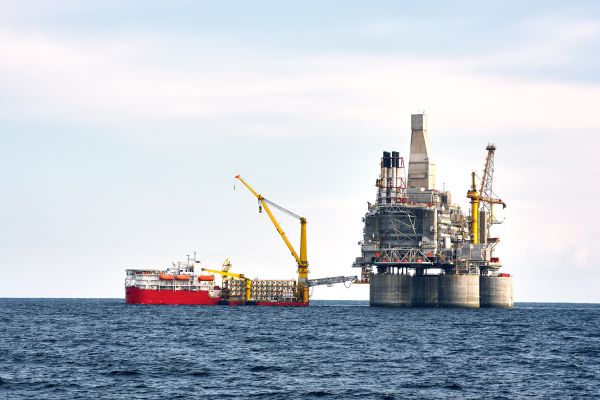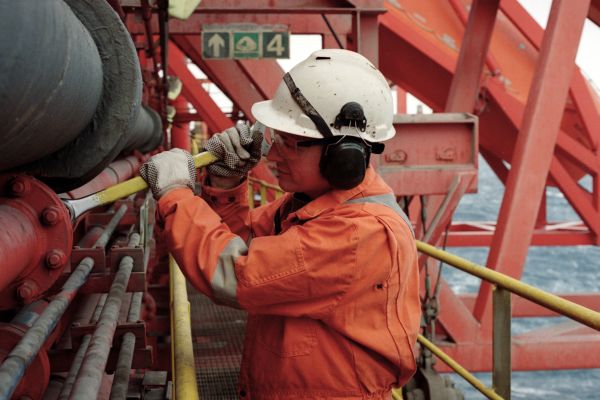While the importance of oil and gas operational improvements should not be underplayed, step changes will ultimately be required for a low-carbon economy. Our final blog explores two ideas for transforming the UK Continental Shelf into a Net-Zero basin by 2050.
Authors: Ian Thomas and Kevin Fitzgerald
Major initiatives for step change emissions reduction are the final element on the ‘Abatement Potential Curve’ plotted by the Oil and Gas Authority (OGA). They follow on from operational improvement and reduced flaring and venting (see previous blogs). They will shape a new offshore energy and supply business.
Step changes focus on the main sources of upstream emissions: power generation, process heat generation and gas compression. Each will require significant capital investment, time for development and implementation and significant government backing. Many of the advances call for new or evolved technologies. Assuring safety and building public trust in new energy sources will also be critical to success.
The competencies of personnel will play a huge part in any Net-Zero success story.
Localised offshore capture and storage (CCS) of CO2 on or near site
This is another step change and one with much emerging promise. OGA proposes using CCS on individual assets to capture CO2 from power turbine or compressor exhaust. This could incorporate sequestration of CO2 into a reservoir for storage and/or enhanced oil recovery (EOR). Alternatively, captured CO2 could be transported to shore for processing before offshore sequestration.
At Vysus Group (formerly Lloyd’s Register Energy), we have seen the potential of CCS, or carbon capture, utilisation and storage (CCUS), for over 15 years. This solution is now firmly back on the UK government’s agenda, forming part of a planned North Sea Transition Deal. The ambition is to capture 10Mt of CO2 by 2030: ‘the equivalent of four million cars’ worth of annual emissions’. The Energy White Paper highlights the opportunity for repurposing oil and gas infrastructure for CCS, lowering costs and construction’s carbon footprint. There is certainly a trend for decommissioning costs being diverted to energy transition projects.
For CCS operations to progress at scale, secure containment will be vital from day one. If storing CO2 in depleted offshore gas fields, existing wells will need to be sealed robustly. Selected storage sites will be able to make use of sophisticated multiple-trap designs for long-term integrity. Even where saline aquifers are chosen, monitoring, measurement and verification will need to meet stringent standards.


Full or partial electrification of offshore assets
OGA’s first step change proposes replacing the open cycle gas turbines used to generate a platform’s continuous power and heat with an electricity supply. This can be achieved via a connection to offshore renewables or an onshore power distribution network. There is no doubting the potential for reducing emissions. As the OGA notes, 60% of the sector’s CO2 emissions in 2018 came from generating offshore electricity. But platform electrification is by no means simply a flick of the switch.
While the Norwegian sector is seeing the electrification of a small number of new platforms near to shore with government support, this solution is currently not viable commercially. The sector lacks the necessary technology, offshore renewable resources and infrastructure, notably cabling (costly to install with major environmental challenges). Offshore asset retrofits are particularly expensive. This may change as the upstream, renewable and power sectors tackle the technology challenges together with government and academia. Deploying floating offshore wind could be the game-changer, requiring no foundations to operate in difficult, deep waters. The UK prime minister’s ‘Ten Point Plan’ sets out aims to tackle regulatory and policy barriers to using clean electricity to power offshore oil and gas assets (The Energy White Paper, Powering our Net Zero Future).
Growth
New Industries
The convergence of CCS and blue hydrogen production to heat homes and workplaces is another potential Net-Zero game-changer.
Challenges
Public Education
Assuring consumers that hydrogen is safe to use in their homes must start immediately with demonstrator projects.
Model
Energy
Much can be learned from the oil and gas sector in managing risk and assuring process safety across asset life stages and the supply chain.
Repurposed infrastructure could also support new energy sources. The convergence of CCS and blue hydrogen production to heat homes and workplaces is another potential Net-Zero game-changer. It could transform ‘waste management’ into a lucrative new business. Commercial viability and political will are coming together with the right technology. The UK government is set to invest up to £1 billion in four CCUS industrial clusters (‘SuperPlaces’). Additionally, a revenue mechanism in 2021 will encourage private sector investment into industrial carbon capture and hydrogen projects. Beyond the UK, both the French and German governments have pledged billions of euros to kick-start national hydrogen strategies.
While some people may remember cooking with ‘town gas’ (a mixture of hydrogen, carbon monoxide and carbon dioxide), many others are likely to associate hydrogen with danger, thanks to the notoriety of the Hindenburg disaster. Assuring consumers that hydrogen is safe to use in their homes must start immediately with demonstrator projects. While the technologies are new, the challenges are old. Much can be learned from the oil and gas sector in managing risk and assuring process safety across asset life stages and the supply chain. A key lesson is to adopt a safety case regime as a common standard, rather than developing different standards ad hoc, as was the case in renewables’ early days.
What about the talent needed?
The competencies of personnel will play a huge part in any Net-Zero success story. The issue is that, since 2015, a trained workforce has been leaving the oil and gas sector. The talent gap has been exacerbated as a result of the pandemic’s downturn. The question is who will be left to service a Net-Zero industry? Government will need to focus efforts here too, rather than assuming that the skills will be there when called on.
Related Services
